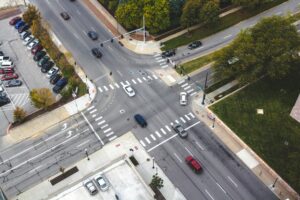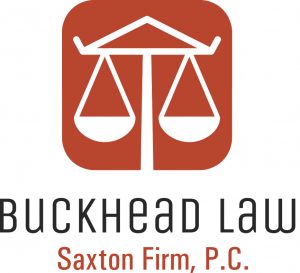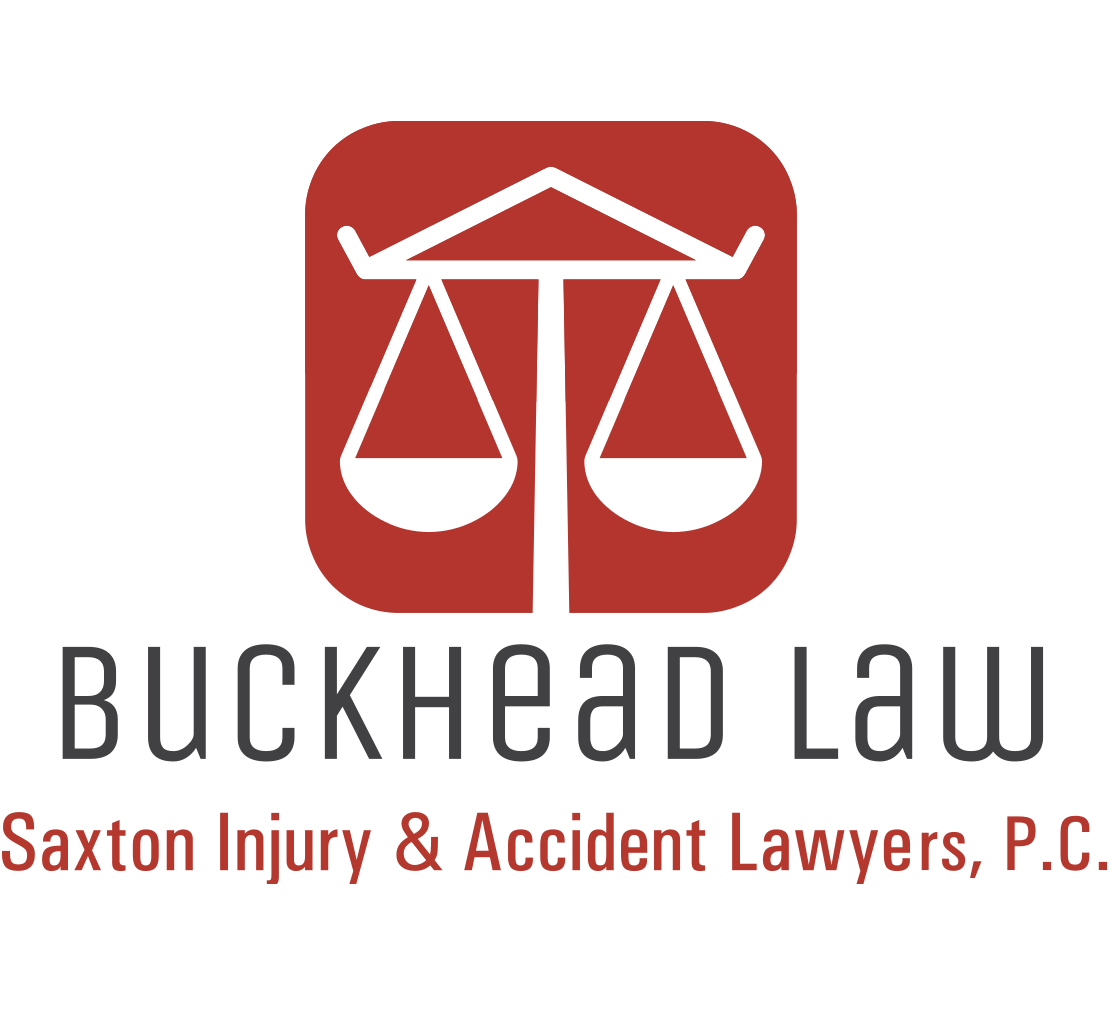No one expects to get into a car accident. Yet, collisions happen all too easily, leaving survivors facing serious injuries and challenges. While any collision can pose dangers, certain types of car accidents—like head-on crashes and angle collisions—can prove more severe than others.
Learn more about the major types of car accidents drivers face and the injuries most common in these crashes. If you get into a car accident, know that you could have legal options. A car accident lawyer can help you determine who bears liability and handle every step of your case for compensation.
Angle Collision
Drivers can face these crashes when two vehicles collide at an angle between 180 and 90 degrees. So, this type of accident happens at an angle, looking like something between a T-bone crash and a sideswipe accident.
According to the National Safety Council (NSC), angle crashes cause the highest number of occupant deaths out of all crash types. The fatalities from angle crashes represent nearly 50 percent of all occupant deaths resulting from traffic accidents. To put that number in perspective, the next deadliest category of crash type is head-on collisions, which make up 28.6 percent of all collision fatalities.
Angle crashes can happen when drivers merge into a lane on the highway, change lanes, turn at an intersection, or in other situations.
Head-On Collision

In a head-on crash, two cars moving in opposite directions strike each other on the vehicles’ front ends. Many of these crashes happen when a driver heads the wrong way on a one-way street or enters a highway from the exit ramp.
Sometimes, drivers who cause head-on crashes make major mistakes without performing any maneuvers.
Drivers who cause head-on collisions could also:
- Drive distracted
- Have trouble reading street signs
- Be under the influence of alcohol or drugs
As mentioned, head-on crashes can also prove devastating. Per the NSC, they represent the second-most deadly type of crash after angle collisions. Since head-on collisions happen only rarely, making up 3 percent of all vehicle collisions, head-on crashes are often especially dangerous.
T-Bone Crash
A T-bone collision happens when one car collides with another at a 90-degree angle. These are also called broadside crashes or side-impact collisions. T-bone accidents happen most commonly at intersections but can also happen in parking lots or when a driver backs out of a neighborhood driveway.
According to the Insurance Institute for Highway Safety (IIHS), side-impact collisions are also a leading cause of fatal accidents. They represent about 20 percent of car accident deaths.
Sideswipe Crash
When two cars travel in the same direction but get too close to the edges of their travel lanes, they may sideswipe one another. This can happen when a driver drifts into another lane, perhaps due to distraction or drowsiness, or when a driver must quickly change lanes to avoid a collision with a car or road hazard in front of them.
While these tend to be the least deadly of all accident types, that doesn’t mean that they can’t result in damages. In one recent year, 371,000 injuries stemmed from sideswipe accidents across the country, according to the NSC. That represents 10 percent of all injuries from motor vehicle accidents.
Rear-End Accident
In a rear-end accident, one driver crashes into another from behind. These accidents happen in many situations. For instance, the front driver could stop at an intersection, a four-way stop, or otherwise stop in traffic—and the rear driver strikes them. Rear-end accidents can also happen when both vehicles are in motion. For example, this could occur when a rear driver speeds behind a vehicle driving at a slower pace. Often, the rear driver bears fault for the accident.
According to the NSC, rear-end crashes are the second most common type of accident leading to occupant injuries. However, these crashes tend to result in fewer occupant deaths than angle crashes and front-end collisions.
The Buckhead Law Group Gets Results
We get you the results you need and provide legal advice through the whole court process. Don’t be unprepared when you could have one of the best legal teams out there to assist you. Reach out to us today to get your consultation.
Pedestrian, Bicyclist, or Other Non-Motorist Accident
Vehicle drivers may also collide with non-vehicle traffic, such as bicyclists, pedestrians, or other non-motorists. While drivers may see some property damage after these crashes, people traveling on foot or by bike tend to be most vulnerable. They may have serious injuries, as they do not have the protection of a vehicle as a buffer during a crash.
Drivers can encounter pedestrians and cyclists at crosswalks, bike lanes, or intersections. However, the Centers for Disease Control and Prevention (CDC) notes that most pedestrian deaths happen on high-speed streets in urban areas, most often at night.
Single-Car Accident
Single-car accidents may include rollovers or situations where a vehicle strikes a stationary object. These crashes make up a surprising number of accident deaths. According to the Insurance Institute for Highway Safety (IIHS), 55 percent of all car accident deaths happened in single-car crashes in 2020.
Different Types of Car Accidents Different Injuries
No matter what type of accident, occupants in the vehicle can face a range of injuries. The forces involved in a car accident transfer to the victims inside the car, which can lead them to collide with surfaces and objects inside. Some victims can even get thrown outside the car, especially when they do not wear seat belts.
Victims may face these types of injuries, depending on the crash type:
- Frontal collisions: Those in the front seat can hit the steering wheel or dashboard. As a result, they often have head, abdominal, chest, and other injuries.
- T-bone crashes: Those closest to the collision point will likely have the worst injuries. They often face crushing injuries, like fractures to the pelvis, skull, neck, and clavicle. Shearing injuries to the neck and internal organs also happen frequently.
- Rear-end collisions: Neck flexion often happens in these crashes, leading to whiplash or spinal fractures.
Many other types of injuries can result from a car accident. On top of it all, victims can have trouble returning to work as they recover.
You may want to work with an injury lawyer after a car accident. They can help you seek compensation for your necessary treatment and other accident-related damages.
Types of Driver Negligence That Can Cause these Types of Car Accidents
Car accidents happen based on the type of negligence involved. Negligence refers to careless or reckless actions that lead to an injurious accident. On the roads, this can refer to several actions (or inactions), such as failing to obey traffic signs and signals.
According to the Insurance Information Institute (III), certain driver behaviors increase the likelihood of fatal collisions.
These behaviors include:
- Speeding or driving too fast for roadway conditions
- Driving under the influence of alcohol or drugs
- Careless driving
- Failing to yield the right-of-way
- Failing to remain in the designated lane
Human error is among the leading causes of car accidents. Other contributing factors include inclement weather conditions and vehicular malfunction.
What Should I Do After a Car Accident?
After any type of car accident, you should seek a medical evaluation by a healthcare professional. Even low-speed collisions can cause a host of hidden injuries, such as slipped disks and soft-tissue trauma. Seeking medical attention does more than promote your health; it also serves as the foundation of your possible personal injury case.
Other considerations in the aftermath of a car accident include:
- Following your treatment plan
- Notifying your insurance provider
- Keeping all documentation related to your losses
- Refraining from giving a recorded statement to the insurer
- Limiting your social media posts
If you suffered injuries in a collision, you can seek compensation from the liable party. A car accident lawyer can help with this endeavor. They can gather evidence, negotiate a settlement, and guide your case toward a fair resolution.
How Collision Victims Can Bring a Case for Compensation
Your legal options after a car accident depend on where you live. Each state makes its own laws regarding how fault and liability work in car accident claims and whether victims can take legal action.
For instance, car victims in Georgia have multiple options after a crash. Georgia operates based on a fault system, meaning that victims can hold at-fault drivers financially responsible after a crash.
Crash victims in a fault-based state can:
- File a claim against the at-fault driver’s insurance
- File a claim with their own insurance provider (if they have uninsured/underinsured motorist protection coverage)
- File a civil lawsuit
A lawyer in your state can explain your options in greater detail.
How the Claims Process Works
In most situations, car accident victims resolve their car accident cases through insurance claims.
To get compensation from another driver’s insurance company, you may need to:
- Report the crash to local police when you’re at the scene
- Report the crash to your insurance company
- Document your losses, gathering evidence of your injuries and accident-related expenses
- Create a demand letter outlining your damages and submit this to the at-fault driver’s insurance company
- Respond to the insurance company’s offer, if it makes one
- Negotiate for a fair settlement and sign a release agreement
Your potential settlement amount generally depends on a few factors of your case. If you have more serious injuries and losses, you could argue for higher financial recovery.
Working with a lawyer can help you navigate this process. Dealing with insurance companies can prove tricky, but car accident lawyers know how to handle them.
Hiring a Lawyer to Handle Your Car Accident Case
No matter what type of car accident you experienced, it could have affected your health and life. You may have high medical costs, and you may need to miss work as you recover. All of it can feel daunting—and that’s one good reason why you may want to hire a lawyer.
A car accident attorney knows all the ins and outs of the claims process. They also know how to go after fair compensation. Here’s what you can expect from a car accident lawyer:
They Can Investigate Your Collision and Gather Evidence
Every strong case for compensation begins with evidence. A lawyer can collect evidence to demonstrate that someone else caused your crash and you faced damages as a result.
They can use a variety of sources, such as police reports, medical records, statements from your doctor, expert witness testimony, accident reconstruction data, and more. So, if the insurance company tries to claim that your pre-existing condition caused your injury and not the crash, your lawyer can counter this claim with evidence.
The insurance company may try to make many other claims to downplay or deny your case, saying that:
- You made your injuries worse.
- It doesn’t bear liability.
- You didn’t see treatment promptly, so your injuries resulted from another cause.
Again, a lawyer can use evidence to push back against any unfair challenges from the insurance company. The stronger the evidence in your case, the smoother the claims process.
Your Legal Team Seeks the Best Possible Settlement
Many times, insurance claims don’t simply result in automatic compensation. This is where your lawyer can come in. If the insurance company offers you an unfairly low amount, they can counter and negotiate a fair settlement. Don’t be fooled by insurance.
For many victims, dealing with the back-and-forth process of working with insurance companies proves too much to handle. However, a car accident attorney knows how to do this efficiently—and seek the maximum payout available.
Your lawyer may work to maximize your compensation by arguing for all damages available in your case, such as pain and suffering. If you struggle with everyday life and face major pain from your crash injuries, your lawyer can say that you deserve additional compensation for these intangible losses.
A Guide Through the Entire Process

Why us? A personal injury lawyer can also offer guidance through every step of the claim or lawsuit process. They can protect your legal rights and help you make decisions. This can help you feel supported during a challenging time.
Additionally, you can get a free case review from many law firms. You can contact a firm to ask about how their services work and what you should do next for your case.
